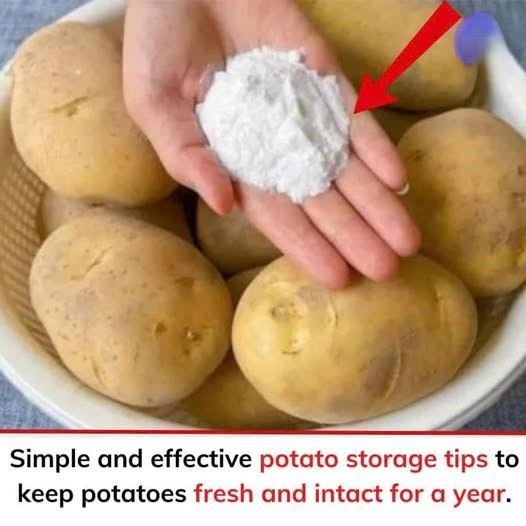Potatoes are one of the most widely consumed vegetables worldwide, prized for their versatility and long shelf life. However, improper storage can lead to sprouting, rotting, or dehydration, reducing both quality and nutrition. This guide shares practical methods to keep your potatoes fresh and intact for up to a year.
1. Why Do Potatoes Go Bad Quickly?
Potatoes are high in starch and moisture, making them prone to spoilage. Common causes include:
-
Exposure to Light: Triggers chlorophyll, turning potatoes green and bitter.
-
High Humidity: Promotes mold and bacterial growth.
-
Wrong Temperature: Too warm accelerates sprouting; too cold converts starch into sugar, altering flavor and texture.
-
Ethylene-Producing Foods: Fruits like apples and bananas release ethylene gas, speeding up potato sprouting.
2. Best Practices for Long-Term Potato Storage
A. Keep Potatoes in a Cool, Dark, and Dry Place
-
Ideal temperature: 45–50°F (7–10°C).
-
Store in a well-ventilated basket, wooden crate, or burlap sack.
-
Avoid direct sunlight to prevent greening and toxin formation.
-
Avoid airtight plastic bags, which trap moisture and cause rotting.
B. Use Salt to Prevent Sprouting
Salt absorbs excess moisture and prevents mold growth.
How to do it:
-
Place a layer of potatoes in a container.
-
Sprinkle a small amount of rock or table salt.
-
Add another layer of potatoes and repeat.
-
Cover with a breathable cloth or perforated lid to allow air circulation.
C. Store Potatoes with Sand or Sawdust
SEE NEXT PAGE
ADVERTISEMENT

